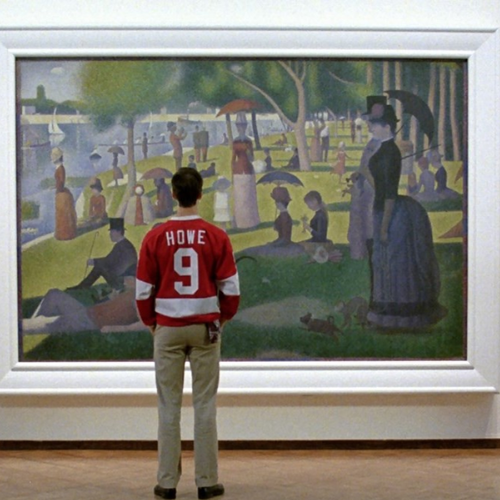The Evolution of Art Through Japan’s History
Given the vast wealth of cultural heritage in Japan, this exploration of traditional Japanese arts will focus on three of the more recent historical periods: the Edo Period, the Meiji Restoration and the Taisho Period. Japanese art before the Edo period was a rich tapestry of artistic traditions, rooted in a deep respect for the natural world, as well as indigenous beliefs, practices and aesthetics.Later interactions with neighboring nations, whether cultures from China or the Korean Peninsula, added further depth to the cultural milieu of the island. Even as external influences and cultural phases came and went, Japan remained steadfast and true to its distinctive and unique artistic identity.
Edo Period (1603 - 1868)

The culmination of the Edo Period marked a turning point in Japanese history, as the nation transitioned from centuries of isolation into a new era defined by increased global engagement and rapid modernization. The shift had a profound impact on the trajectory of Japanese art, laying the groundwork for dynamic approaches to tradition within modern Japanese society.
Meiji Period (1868 - 1912)


The Meiji Restoration of 1868 marked a seismic shift in Japanese society, as the nation undertook sweeping reforms to modernize its political, economic and cultural infrastructure. The art of the Meiji period was no exception, as traditional techniques were refigured alongside the introduction of new artistic forms imported from the West.
This adoption of foreign techniques and subjects was not a wholesale abandonment of tradition, however; rather, it was a complex negotiation that allowed for coexistence between diverse artistic expressions. As Japan navigated its newfound place on the global stage, art became a powerful tool to redefine Japanese national identity.

Western art techniques, such as the use of oil paints, were introduced to Japan during this period, leading to the emergence of yoga or Western-style art. Artists like Kuroda Seiki and Yamamoto Hosui played pivotal roles in bridging the gap between Japanese artistic tradition and the innovations of the West.
Taisho Period (1912 - 1926)
The Taisho Period continued the trajectory of artistic innovation while grappling with the complexities of a rapidly changing society. Japan's growing urbanization and industrialization contributed to a flourishing urban middle class with an appetite for new forms of artistic expression. This period witnessed the emergence of shin-hanga (new prints) and sosaku-hanga (creative prints), which combined traditional woodblock printing techniques with contemporary themes and aesthetics.
Into the 20th Century: Japanese Modernism and Contemporary Art


Her groundbreaking conceptual and performance art broke new ground by inviting audience participation and provoking thought on critical societal issues. Cut Piece, a performance held in Kyoto in 1964, is often considered her crowning achievement for the incisive way in which it highlighted the way women’s bodies are, and have been, treated by others throughout history.

Among the world’s best known living artists, Yayoi Kusama is perhaps best known for her pioneering work in the realm of abstract art, particularly her iconic polka dot patterns and infinity mirror rooms, which have garnered international acclaim.
In recent decades, Japanese manga and anime have also captured the imaginations of audiences worldwide. The distinct visual style, narrative complexity and diverse themes present in manga and anime have influenced graphic novelists, animators and filmmakers across continents, and the widespread popularity of Studio Ghibli films reflects the appeal of Japanese storytelling.
Suits of Samurai Armor


The Importance and Influence of Japanese Art
Japanese art has exerted a profound and enduring influence on artistic traditions around the world, leaving an indelible mark on various forms of visual expression and creative thought. The distinctive aesthetics, techniques and philosophies inherent in Japanese art have transcended geographic boundaries and cultural barriers, inspiring artists, designers and thinkers alike.
Ukiyo-e and Printmaking: A Global Visual Language

Ukiyo-e, a genre of woodblock prints that flourished during the Edo Period, holds a unique place in the global artistic canon. These prints, which depicted scenes from everyday life, kabuki actors, landscapes and bijinga (images of beautiful women), captured the imagination of European Impressionist artists in the late 19th century. Figures like Vincent van Gogh, Edgar Degas and Henri de Toulouse-Lautrec were deeply influenced by the bold compositions, vivid colors and flat perspective of ukiyo-e prints. The concept of japonisme emerged, embodying the enthusiasm for Japanese art and design that swept across Europe and beyond.
Aesthetic Philosophy and Design Sensibilities
Japanese art's emphasis on simplicity, asymmetry and the beauty of imperfection has had a profound impact on design aesthetics worldwide. The concept of "wabi-sabi," celebrating the beauty of transience and imperfection, has inspired architects, designers and artists seeking to infuse their creations with a sense of authenticity and depth. From the Bauhaus movement in Germany to contemporary minimalism, Japanese aesthetics have contributed to a global design language that values both form and function.

Artists and jewelers alike across the world have long incorporated Japanese aesthetics into their creations. Inspired by the Japanese "Wabi-Sabi" aesthetic, famed American jeweler Henry Dunay's design ethos celebrates concepts of the impermanence and inherent beauty of nature through timeless designs based on simplicity and precision. In this necklace, which mimics the undulating movement of billowing fabric, a lustrous white pearl is suspended. The 18K yellow gold chain features his signature scratched surface technique that he calls "Sabi," a nod to the longstanding tradition.
Rooted in ancient traditions yet forever dynamic, Japanese art continues to reflect the nation's ability to absorb external influences while preserving its unique identity. Explore our collection of Japanese art and antiques to learn more.







